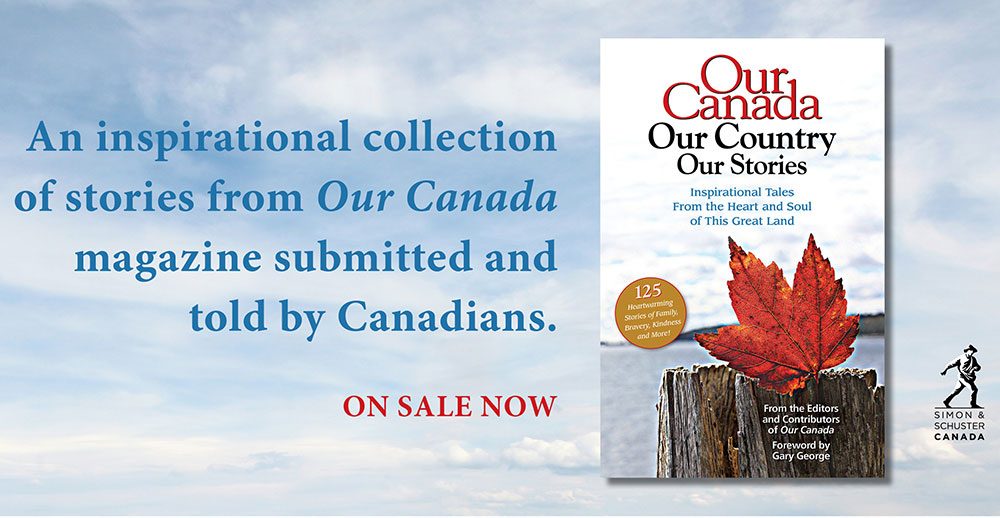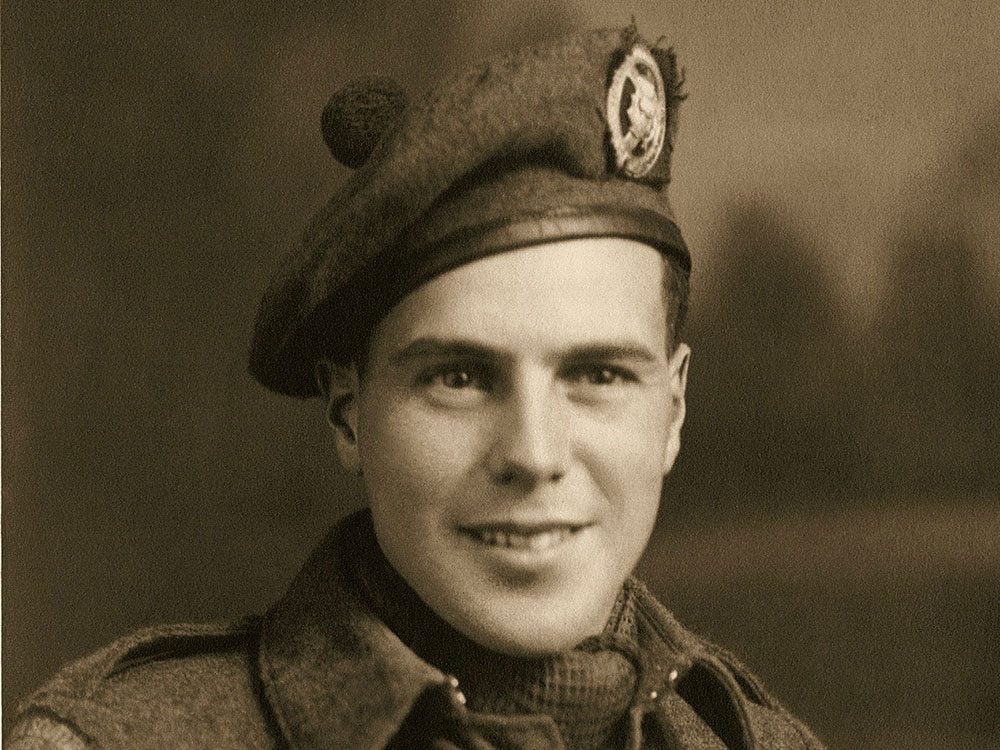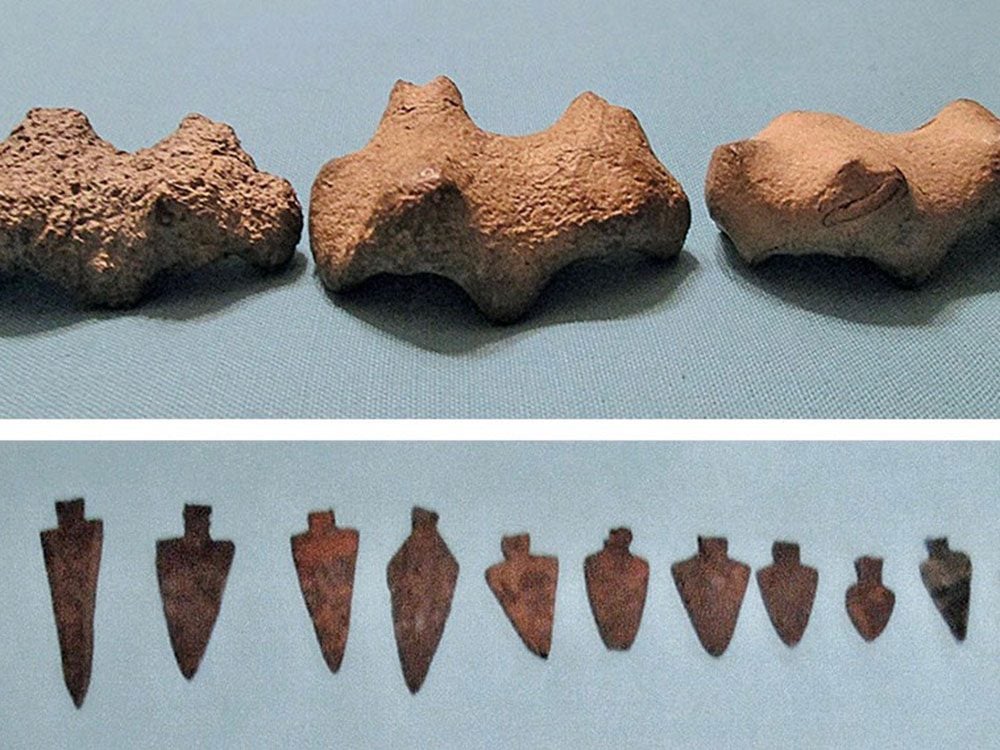
Oleg and Grace Kelly
Having been captivated by Grace Kelly in her role in the 1953 film, Mogambo, fashion designer Oleg Cassini wooed the actress with a daily bouquet of red roses until she finally agreed to have lunch with him. Not only did Cassini begin to dress the actress, but the two began dating. Cassini created “the Grace Kelly Look,” as he called it, transforming the glamorous actress’s look from “school teacher” to something a little sexier. In 1954, they became engaged to be married, although the engagement was broken off due to pressure from the actress’s parents—they didn’t like that he’d been married twice before and had a reputation of being a Casanova. In 1956, Kelly married Prince Rainier of Monaco.
Oleg and Jackie Kennedy
After Cassini met Jackie, she began to consult him about fashion. “I dressed Jackie to be a star in a major film, which she was, the most famous first lady of all time,” Cassini once said, and Mrs. Kennedy agreed, “Oleg dressed me for the part.” Over the years, Cassini created more than 300 outfits for Jackie, whom he regarded as American royalty, and drew on his experience with Kelly to give the First Lady her stunning look. (Find out more secrets to Jackie Kennedy’s timeless style.)
Grace, Jackie and John F. Kennedy
After her marriage to the Prince of Monaco, Princess Grace came to favour Givenchy over Cassini: In this interview, which Kelly did shortly after JFK’s death, she discusses the president’s style and youthfulness and her evolving sense of fashion. She also discusses the time Jackie convinced Grace to visit John in the hospital in 1954 while he was recovering from back surgery in New York—the first time Grace met the man who would become president. (For the meeting she dressed as a nurse as a prank!)
Of course, there are some who insist that before he married Jackie, John Kennedy had once been in love with Grace Kelly. But we’ll never get firsthand confirmation: Princess Grace of Monaco passed away on September 14, 1982 (in a tragic car accident in her adopted country of Monaco), and Jacqueline Kennedy Onassis passed away in 1994 (of cancer).
Next, here are 11 unanswered questions about Grace Kelly’s death.

Why Aretha Franklin rarely toured outside of North America
Aretha Franklin, the Queen of Soul, will always be known for her singing chops that made her the first woman inducted into the Rock and Roll Hall of Fame. Although Franklin had rare singing and performing talent, she had a very relatable fear that kept her from touring overseas—flying.
In 1984, the Grammy-award-winning artist was on a small plane during a turbulent flight, after which she stopped flying for decades, The Daily Beast reports. Franklin then relied on buses for ground transportation. Her fear of flying, however, didn’t always exist. The singer reportedly told the Belfast Telegraph that her fear came overnight after that one flight.
Her preference for ground transportation meant the singer turned down invitations from Prince Albert of Monaco and even Queen Elizabeth II to perform overseas, according to Mental Floss and Money magazine. Franklin was also previously in the running for judging the 12th season of the TV show American Idol. Again, her travel restrictions kept her from the role, according to The Daily Beast.
The singer took a course called “Fearless Flyers” to overcome her fear—and she missed two weeks of classes, effectively flunking. And although the singer tried to conquer her fear, she didn’t really dwell on it or her travel restrictions. In an interview with Vanity Fair, Franklin spoke about flying. She said she would fly again and that she took classes like “Fearless Flyers.” The interviewer pressed her further, asking if she had watched videotapes too. Her response? “Who cares?”
Next, check out the most memorable milestones in Aretha Franklin’s career.

Our Canada, Our Country, Our Stories
We’ve pulled together a collection of all-time favourite stories from Our Canada magazine for an inspiring new book, Our Canada, Our Country, Our Stories. Inside, you’ll find 125 heartwarming tales of family, bravery, courage and kindness—written by Canadians, for Canadians.
From Paradise, Newfoundland and Labrador, to Nanaimo, British Columbia, here are the heartwarming stories about things that matter to us the most:
Family—It’s what makes us resilient and keeps us strong–the joys, sorrows, humour and wisdom of family life.
Kindness—Inspiring stories about Canadians who do good works in their communities and around the world.
Valour—True stories that commemorate the sacrifices of our brave men and women in uniform.
Memories—Fond recollections of everything from lakeside in the summer to hockey in the winter; characters who inspired us to the games we love.
Adventure—From camping on the tundra to motoring cross-country, here are tall tales for intrepid adventurers.
Community—Canadians celebrate their neighbourhoods, culture and inclusiveness in poignant stories of struggle and achievement.
Talent—Gifted Canadians share their creative journeys while chasing their dreams.
The stories in this engaging book are from Our Canada and it’s companion publication, More of Our Canada—magazines like no other. Written by readers, every issue brings Canadians together to share adventures, celebrate joyful memories and tell the stories of this great land of ours and the people who so proudly call it home. Guaranteed to warm your heart and make you proud.
Here’s how to order your copy of Our Canada, Our Country, Our Stories!

Veteran Profile: Frederick L. Fielding, Nova Scotia Highlanders
Born on August 8, 1920, in Onslow Mountain, N.S., Frederick joined the Canadian Army in 1941 and was subsequently assigned to the Royal Canadian Ordnance Corp.
“I went from being the youngest in the Company to the oldest… I saw many of my friends killed, but I would do it all over again. We had to.”
Leaving Halifax on the HMCS Cynthia, he did his advanced training in Aldershot, England and was transferred to the North Nova Scotia Highlanders, who were engaged in desperate fighting in Caen, France. Later, he was wounded in Kleve, Germany, but returned to the front soon afterwards. Discharged in 1946, Fred returned to his wife and family in Nova Scotia. He passed away in 2011.
For more profiles by Veterans Voices of Canada, click here.

The Life and Times of Aretha Franklin
March 25, 1942: Aretha Louise Franklin is born in Memphis, Tennessee. She is the fourth of five children.
1955: At the age of 12, she gives birth to the first of her four sons.
1956: Releases her first album, Songs of Faith, at the age of 14. It’s recorded live at New Bethel Baptist Church where her father, C.L. Franklin, is the reverend.
1961: She moves to New York City and signs with Columbia Records. Her self-titled, second album is released. Two of its tracks make the R&B Top 10.
1966: After a few years of moderate success, she signs with Atlantic Records with the help of her first husband and manager, Ted White. She records “I Never Loved a Man (The Way I Love You)” with the legendary Muscle Shoals Rhythm Section at FAME Studios in Alabama. The song reaches no. 9 on the Billboard Hot 100.
1967: Her run of hit singles begins with “Respect,” an empowered cover of an Otis Redding track. It becomes a landmark recording of the feminist movement, spends two weeks atop the Billboard Hot 100 and earns Franklin her first two Grammys. Dominance of the pop charts also earns her the title “The Queen of Soul.”
1968: Performs “Precious Lord” at the funeral of her friend, Martin Luther King Jr.
1972: Returns to her gospel roots with Amazing Grace. It becomes the best-selling gospel album of all time.
1977: With the emergence of disco and younger singers like Donna Summer and Chaka Khan, her popularity wanes.
1979: After a string of chart failures, she leaves Atlantic Records. She signs to Arista Records.
1980: Has a notable cameo in The Blues Brothers, which helps revive her career.
1985: Returns to the top of the pop charts with the single “Freeway of Love.” Her 33rd album, Who’s Zoomin’ Who?, features a more danceable pop sound.
1986: Releases her follow-up, entitled Aretha. Her duet with George Michael, “I Knew You Were Waiting (For Me),” hits no. 1 on the Billboard Top 100.
1987: Becomes the first female artist to be inducted into the Rock and Roll Hall of Fame.
1993: Performs at the inauguration of Bill Clinton.
1994: Receives the Grammy Lifetime Achievement Award and becomes a Kennedy Center Honoree.
1998: Replaces Luciano Pavarotti to sing “Nessun dorma” at the Grammys. Her performance wins her international acclaim.
2005: Then-commander-in-chief George W. Bush awards her with the Presidential Medal of Freedom.
2008: Receives her 18th Grammy Award nomination for “Never Gonna Break My Faith,” a duet with Mary J. Blige. She becomes one of the most honoured artists in history.
2011: Releases her first album on her own label, A Woman Falling Out of Love.
Aug. 16, 2018: After years of poor health, she dies in her Detroit home at the age of 76.
Discover these little-known facts about the greatest songs of all time.

What are those little round holes in elevators?
That tiny hole you see on the elevator door? It might just save your life. Say the elevator you’re in stops at a floor and the doors don’t open. It could be a power failure or an equipment malfunction. But getting out isn’t easy. Elevators are equipped with lots of features to keep the doors from opening randomly or when they’re between floors.
“What you’ll usually see is the fire department, or sometimes the building mechanic, will get on site and use some procedures to get the people out while the problem is being worked on and hopefully repaired,” says Robert Solomon, the director of building, life safety codes, and fire protection systems for the National Fire Protection Association.
That’s where those small holes come in. Opening the doors requires a special tool called a hoistway door unlocking key. It gets inserted into the door to release the landing door. Since the fire code began requiring them in the 1970s, manufacturers such as Otis and Schindler have equipped their elevators with them.
The keys are usually held by a restricted number of people, such as an elevator mechanic or building superintendent. The fire code also requires that special access tools for each building be kept in a secure location such as a Knox Box that firefighters can open.
Fortunately, it’s rare that using the keys is necessary, Solomon says.
Survive basically anything with these 20 fixes for life-threatening problems and daily hassles.

Dog and cat years: explained
If you’re a pet owner, then you’ve probably heard (or said) the phrase, “my dog is __ years old in dog years!” We create close bonds with our pets –– it’s only natural that we want to make them seem more human. But what was the genesis of “dog years” and “cat years,” and is it even factual? The American Animal Hospital Association found out.
The common belief among pet owners is that one dog year is equivalent to seven human years. Surprisingly, this old wives tale actually has some logic behind it. This equation originated when a few people observed that a healthy, average-size medium dog lived one-seventh as long as its owner. But in today’s world with hoards of dog breeds, what is “average-sized”? Depending on the size of your pup, it could live a shorter or longer life. For example, big dogs like German shepherds have shorter lifespans than Shih-Tzus. Plus, with modern veterinary medicine, dogs are able to receive better care and live longer than when the “dog years” concept emerged. (Don’t miss these secrets your pet won’t tell you.)
A more accurate method to measure aging in dogs
Today, veterinarians use the Canine Life Stage Guidelines, which was developed by the AAHA, to gauge the age of your dog. Dogs have six life stages: puppy, junior, adult, mature, senior, and geriatric.
- Puppy: Birth to sexual maturity
- Junior: Reproductively mature, still growing
- Adult: Finished growing, sexually and structurally mature
- Mature: From middle to last 25 per cent of expected lifespan
- Senior: Last 25 per cent of life expectancy
- Geriatric: Beyond lifespan expectation
The ages for each life stage vary for the size of your pup. In order to actually estimate the “human” age that corresponds with their life stage, you can line it up with typical human developmental stages. Here’s an example: You have a six-month-old, medium-sized cocker spaniel. Based on his age and size, he falls into the “junior” category. If he was a human, he’d likely be in primary school, between 5-10 years old.
What about cats?
Cat people, it’s your turn. The joint American Association of Feline Practitioners-The American Animal Hospital Association created Feline Life Stage Guidelines, which, similarly to their canine counterparts, divides cats into six categories: kitten, junior, prime, mature, senior and geriatric.
Cats don’t have as much size variability as dogs, so the age ranges for each life stage stay almost the same for each breed, reports The Conversation. They also live longer than dogs on average, so each of their life stages is extended.
Now, we know what you’re thinking: all of these calculations just for owners to know whether their pets graduated college yet? Not quite. Veterinarians use this data for real-world situations. As your pet gets older, different health concerns become more or less relevant (think: premature birth in puppies/kittens and arthritis in seniors), so vets need to know their life stage to give them proper care. To truly make these life stage guidelines accurate, your pet needs to be healthy; make sure you’re keeping up with all of the needs of your animals so they can live a long and happy life––with you!
This is what six dog breeds looked like 100 years ago.

The life of an artifact hunter
In the fall of 1957, I arrived in the hamlet of Bindloss, Alta., to teach school. I met and married Bill Picotte, the range rider of the Remount Community Pasture in the area. The ground in and around Bindloss was very sandy and, combined with high winds and drought, the surrounding farmland was prone to erosion, as were the man-made fireguards in the large community pasture. It takes a lot of wind and drifting sand and soil to expose the land right down to the hardpan, and dust storms as dense as winter blizzards often resulted. Such was the situation we lived in at the time, but there was at least one silver lining—finding once-buried artifacts from long ago became a realistic, entertaining and educational pursuit.
We first began searching for arrowheads in the early 1960s, and it soon became the most enjoyable hobby I’ve ever had. It was a real thrill to find a perfect arrowhead, and some were absolute works of art. We found many arrowheads of rare beauty chipped from flint, chalcedony, quartz, jasper, obsidian, petrified wood and chert. Others were made from plain field stone.
There were also many other artifacts to be found, such as stone awls, knives and hammers; fleshing tools we called scrapers; spokeshaves, which were used long ago to remove bark from the shafts upon which the arrowheads were mounted; and iniskim, or buffalo calling stones, which are fossils resembling miniature buffalo that, according to Native oral tradition, had the power to summon buffalo herds in times of hunger. We also found clay pottery shards and shell beads; musket balls, lead bullets and casings; old coins, buttons and so much more.
Along with our artifacts, we’d bring home interesting pieces of petrified wood and multi-coloured rocks, which led to the purchase of a rock polish and another relaxing activity for me, rock polishing.
I was an avid artifact hunter and spent many enjoyable hour combing the fields, while reaping the benefits of fresh air and exercise, and enjoying nature. Bill joined me from to time to time, but he disliked walking, often saying, “That’s what horses are for!” It wasn’t uncommon to come across wildlife while we were afield. There were birds aplenty and I would occasionally encounter rattle snakes. One time, I came across a baby antelope, with its neck outstretched and its head on the ground, seemingly taking a little rest while its mother was off grazing nearby.
The best time of year to hunt was early spring before the farmers began to work the land. With today’s farming methods, there is little or no soil erosion, but back then, the erosion could be quite pronounced throughout the planting and growing seasons, and when it was, late fall would also become a great time to hunt for artifacts.
My artifact-hunting days are now behind me, but, in addition to many memories of being out on the land, I still derive a sense of satisfaction from my artifact collection— 1,000 perfect and near-perfect arrowheads being the most treasured items of all.
Take a peek at this Canadian’s impressive antique collection!

No matter how much sweeping, mopping and spraying you do, that musty basement smell just won’t go away. You’ve come to realize it’s just the way your below-ground floor prefers it. But don’t give up so fast! That damp scent reminiscent of a wet dog can be eliminated!
The first step in learning how to get rid of musty smell is to find the culprit. It’s not enough to clean, because the reality is it’s not a build up of dust or dirt at all. Basements are the ideal environment for harboring moisture, which is why you’ll need to do some investigative work to determine what is causing the smell. Water in your basement? Many basement leaks can be cured with a weekend’s work.
Underground living spaces can’t hold moisture like the upper levels of your home. When the warmer air from above seeps into your basement, the moisture in the air condenses and ends up on your dark basement walls and cold water pipes. Mold begins to form, and the unpleasant smell you can’t seem to shake is born.
It’s important to find out if moisture is entering your basement in other ways, as well. If you notice a broken seal on a window or a crack in the foundation wall, you may have found your musty culprit. You should also check to see if you have clogged rain gutters, French drains, sewer backups, leaky pipes or even a broken seal on your laundry dryer vent as these problems can all contribute to a musty basement. (Check out the 25 things you need to do when you move into your new home.)
Once you’ve determined where the smell is coming from, it’s time to remove it! This is the second step for understanding how to get rid of the musty smell, and while it won’t rid your basement of the stench just yet, it’s important you have some patience.
Certainly repair your broken seals, leaky pipes and wall cracks, as well as fix any outdoor water coming in contact with your foundation. Then, use a dehumidifier to suck up the moisture, and install a window fan to increase ventilation. You can also insulate your pipes for even more protection.
The third step for how to get rid of musty smell is to kill the mold. To do this, you can pour undiluted white vinegar into a spray bottle and heavily mist the affected areas, keeping your windows open and air circulating. Allow the spray to dry. (Here are 20 home repairs anyone can do.)
The final step for how to get rid of musty smell is actually lifting the odour! You can place bowls of white vinegar, cat litter in open containers, or baking soda throughout your basement in order to absorb the stench. You should notice a more pleasant smelling basement in a couple of days.
So long as you ensure you identify and fix any condensation, leaks or other sources of moisture in your basement, properly cleaned and dried the area and used a DIY odour eliminator your basement should be good to go!
Next, find out the 12 home renovations you’re likely to regret later.

New Life for Old Gum
Design More than 16 billion euros is spent on chewing gum around the world each year, and much of it ends up stuck to pavements: it is said to be the second most common type of street litter after cigarette stubs.
British designer Anna Bullus became determined to recycle some of this discarded gum after discovering that its main ingredient is a kind of synthetic rubber that can be remolded into new products.
Her bright pink, bubble-shaped collection bins, called Gumdrop, are themselves made from recycled gum. These can be hung at head height with a message explaining that any gum left in them will be made into new products, such as mugs, lunch boxes and rain boots.
The University of Winchester was one of the first to try out the bins. After 18 months it noticed a drop in litter and is now expanding the scheme. London’s Heathrow Airport also tried the bins for three months and said they reduced cleaning costs by 6,800 euros.
“I do believe that we can change the way people behave,” says Bullus.
Free Rides to Clear the Air
Transport The German government says it will trial free public transport in five cities suffering from air pollution. Bonn, Essen, Herrenberg, Reutlingen, and Mannheim will all benefit from the new proposals, which come into force before the end of the year.
Pressure to make public transport free for environmental reasons has gradually been growing across Europe as countries struggle to meet European Union rules on toxic air pollution. Indeed Brussels, the EU’s de facto capital, has itself recently made its public transport and bike-sharing system free on the smoggiest days.
Another Belgian city, Hasselt, was among the first to go fare-free, back in 1997. But Europe’s only capital to offer permanent free transport to all residents is Tallinn in Estonia.
Amsterdam Fishes for Plastic
Tourism An Amsterdam company is offering sightseeing tours of the city with a difference. Plastic Whale offers canal trips in a recycled boat, offering participants the chance to fish out plastic waste as they go.
“Even in the beautiful, UNESCO-certified canals of Amsterdam, the problem of plastic waste is severe,” says founder Marius Smit. “Each year we fish out more than 25,000 plastic bottles and tons of other kinds of plastic waste.”

Student Saves Toddler on Milan Subway
Heroes Italian student Lorenzo Pianazza was on his way home at Milan’s Repubblica metro station when he saw a toddler fall onto the track. He didn’t think twice, and jumped down to grab him, even finding time to retrieve one of the child’s toys.
“I saw that there was a minute and a half before the next train arrived, so I could do it in time,” he said afterwards. “No one else was moving—they just stood there looking.”
Meanwhile, the station manager saw the episode unfold on monitors in the control room and immediately pressed the red button to stop any trains coming. Both were praised by Milan’s mayor, Giuseppe Sala, who invited them to his office.
“The important thing is that the child is back in its mother’s arms,” said Pianazza. “They’re saying I was brave… I was just ready.”
Sources: Design—BBC News, 6.3.18. Transport—The Guardian, 14.2.18; 26.2.18. Tourism—Lonely Planet, 22.2.18; The Guardian, 28.2.18. Heroes—ABC, 15.2.18